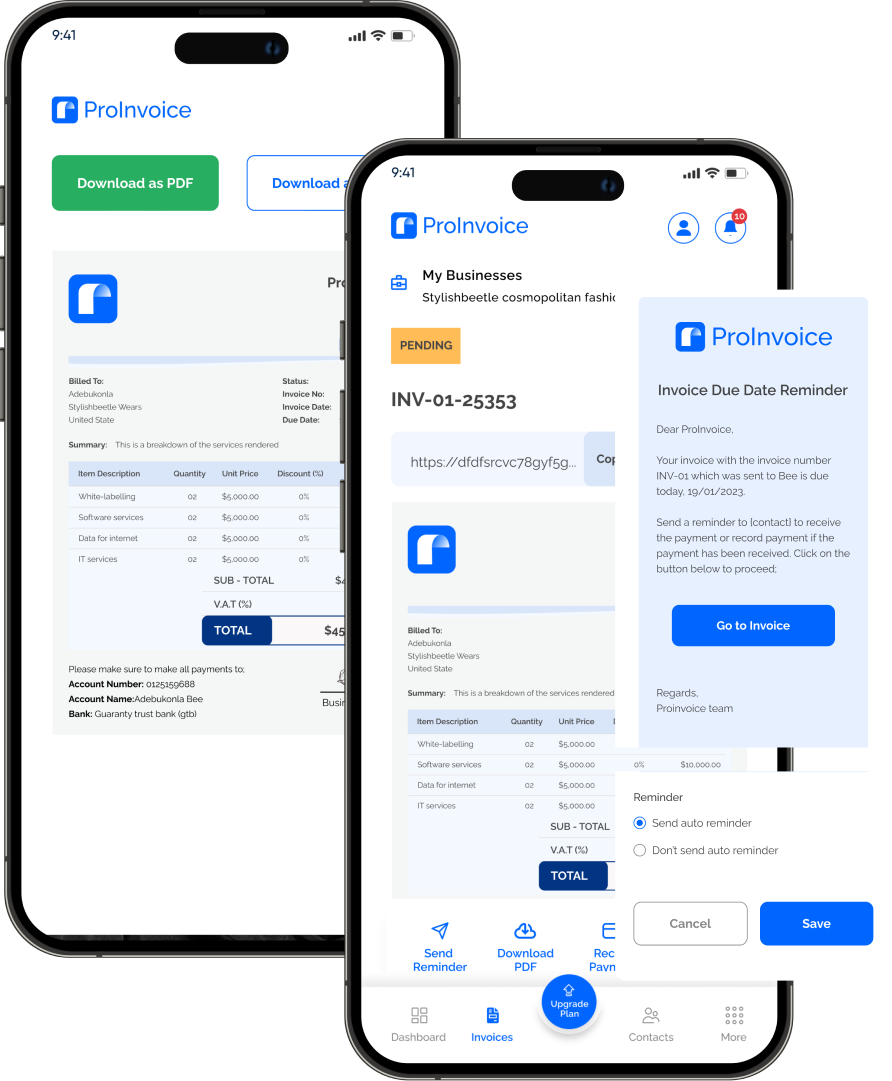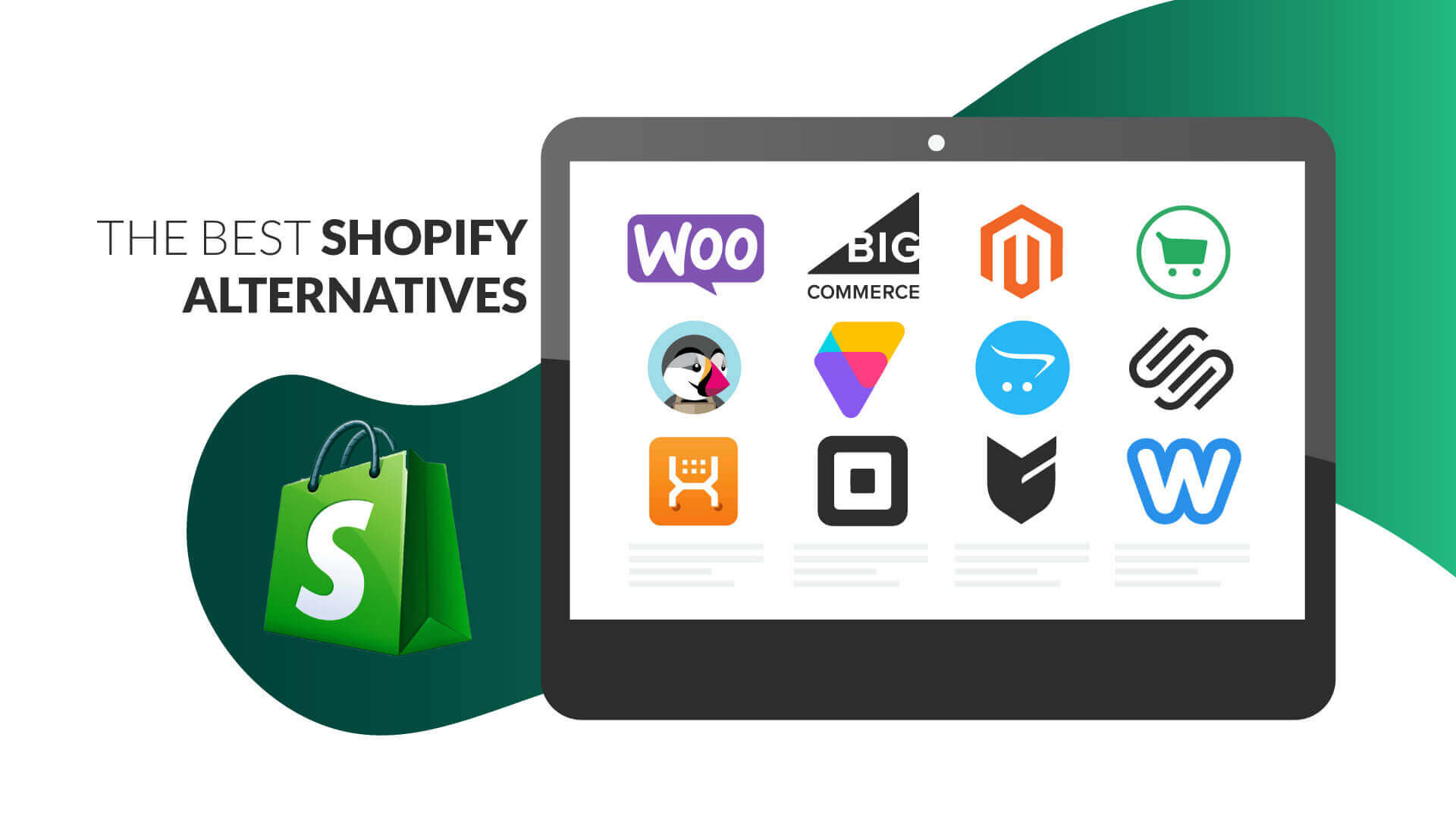Student Loan Forgiveness Programs USA Guide: Student loan forgiveness programs in the USA offer substantial relief opportunities for borrowers struggling with educational debt burdens. Furthermore, these programs provide pathways to eliminate remaining balances after meeting specific requirements. Additionally, understanding available forgiveness options has become increasingly critical as student debt levels continue rising. Moreover, program requirements evolve under changing federal policies.
Stay organized as you grow. Use ProInvoice to manage billing and client relationships with ease.
The landscape of student loan forgiveness encompasses federal programs like Public Service Loan Forgiveness (PSLF). It also includes income-driven repayment plan forgiveness and specialized programs for teachers, healthcare workers, and military personnel. However, each program features distinct eligibility requirements, application procedures, and forgiveness timelines. Therefore, careful navigation is required to maximize benefits.
Successfully pursuing loan forgiveness requires strategic planning and meticulous record-keeping. Additionally, borrowers must understand program-specific requirements that can change based on federal policy updates. Furthermore, they must maintain organized documentation and submit annual recertification paperwork. Often, they also need to coordinate between multiple loan servicers throughout lengthy forgiveness processes.
For professionals managing variable income streams while pursuing loan forgiveness, maintaining organized financial documentation is crucial. Professional systems, including reliable invoice management platforms, help demonstrate income patterns. These patterns are required for income-driven repayment plans and forgiveness program applications.
Public Service Loan Forgiveness (PSLF) Program
PSLF Eligibility Requirements and Qualifying Employment
Public Service Loan Forgiveness represents the most comprehensive federal forgiveness program. It offers complete loan forgiveness after 120 qualifying monthly payments. Additionally, borrowers must work full-time for eligible employers. Qualifying employers include federal, state, and local government agencies. They also include 501(c)(3) nonprofit organizations and certain other public service organizations.
The program requires borrowers to work full-time (typically 30+ hours weekly) for qualifying employers. Meanwhile, they must make payments under eligible repayment plans. Part-time employment may qualify if multiple qualifying positions total full-time hours. However, documentation requirements become more complex in these cases.
Qualifying Loan Types: Only Direct Loans qualify for PSLF. Therefore, borrowers with FFEL or Perkins loans must consolidate into Direct Consolidation Loans. However, consolidation resets the payment count. As a result, timing becomes crucial for optimal benefit realization.
Eligible Repayment Plans: Income-driven repayment plans qualify for PSLF. These include Income-Based Repayment (IBR), Pay As You Earn (PAYE), Revised Pay As You Earn (REPAYE), and Income-Contingent Repayment (ICR). Additionally, the 10-year Standard Repayment Plan also qualifies.
Stay organized as you grow. Use ProInvoice to manage billing and client relationships with ease.
PSLF Application Process and Documentation
The PSLF application process requires annual Employment Certification Forms (ECFs). These forms track qualifying payments and employer eligibility. Furthermore, submitting ECFs annually helps identify potential issues early. It also ensures accurate payment counting throughout the forgiveness timeline.
Payment Counting Requirements: Qualifying payments must be made on time and for the full amount due. Additionally, borrowers must be employed full-time by qualifying employers during payment. Late payments, partial payments, or payments made while not employed by qualifying employers don’t count. Therefore, they won’t contribute toward the 120-payment requirement.
Loan Servicer Coordination: PSLF applicants must work closely with loan servicers. This ensures accurate payment tracking and proper plan enrollment. However, servicer transfers can complicate record-keeping. Consequently, personal documentation becomes essential for verification purposes.
PSLF Temporary Expanded Program Benefits
The Department of Education’s temporary PSLF waiver program, extended through December 2023, provided expanded eligibility for previously non-qualifying payments and loan types. While the waiver period has ended, understanding its provisions helps borrowers assess their current payment counts and potential benefits.
Legacy Payment Recognition: The waiver allowed credit for payments made under non-qualifying repayment plans and on non-qualifying loan types, significantly increasing forgiveness eligibility for many borrowers who previously didn’t qualify.
Consolidation Benefits: The waiver provided favorable consolidation terms, allowing borrowers to receive credit for pre-consolidation payments on loans included in Direct Consolidation Loans.
Income-Driven Repayment Plan Forgiveness
Understanding IDR Forgiveness Timelines
Income-driven repayment plans offer loan forgiveness after 20-25 years of qualifying payments. The exact timeline depends on the specific plan and loan types. Furthermore, these programs provide alternatives for borrowers who don’t qualify for PSLF. They also serve those who work in non-public service careers.
IBR and PAYE Plans: These plans offer forgiveness after 20 years of qualifying payments for undergraduate loans. However, graduate loans require 25 years. Additionally, monthly payments are typically 10-15% of discretionary income. This makes them manageable for many borrowers.
REPAYE Plan: This plan provides forgiveness after 20 years for undergraduate loans. Graduate loans require 25 years. However, it includes unique features like interest subsidies and spousal income considerations. These features affect payment calculations.
ICR Plan: The oldest income-driven plan offers forgiveness after 25 years of payments. It typically results in higher monthly payments than newer plans. Nevertheless, it provides certainty for long-term planning.
Tax Implications of IDR Forgiveness
Unlike PSLF, forgiveness through income-driven repayment plans creates taxable income in the forgiveness year. Consequently, this can result in substantial tax liabilities. Understanding these implications helps borrowers plan for potential tax consequences. It also helps them avoid financial surprises.
Forgiven Amount Taxation: The IRS treats forgiven loan balances as taxable income. Therefore, this can create “tax bombs” that require careful financial planning. They may also require potential tax payment arrangements.
Tax Planning Strategies: Borrowers approaching IDR forgiveness should work with tax professionals. Together, they can develop strategies for managing tax liabilities. These may include installment payment agreements and potential insolvency exceptions.
Specialized Professional Forgiveness Programs
Teacher Loan Forgiveness Programs
Teachers working in low-income schools may qualify for federal Teacher Loan Forgiveness, providing up to $17,500 in Direct Loan or Stafford Loan forgiveness after five consecutive years of qualified teaching service.
Eligibility Requirements: Teachers must work full-time in Title I schools, teach high-need subjects (mathematics, science, special education), and meet state certification requirements. The program requires five consecutive years of service, and taking breaks can disrupt eligibility.
Benefit Calculations: Highly qualified teachers in mathematics, science, or special education may receive up to $17,500 in forgiveness, while other qualified teachers may receive up to $5,000. The program coordinates with PSLF but requires strategic timing decisions.
State-Specific Programs: Many states offer additional teacher loan forgiveness or repayment assistance programs that complement federal options, potentially providing greater total benefits for qualified educators.
Healthcare Professional Programs
Healthcare workers have access to various loan forgiveness and repayment programs targeting workforce shortages in underserved areas and high-need specialties.
National Health Service Corps: Provides loan repayment for primary care providers serving in Health Professional Shortage Areas, offering substantial benefits for qualifying physicians, nurse practitioners, physician assistants, and other healthcare professionals.
Nurse Corps Loan Repayment Program: Specifically targets registered nurses and advanced practice nurses working in critical shortage facilities, providing up to 85% loan repayment over multiple years of service.
Indian Health Service Programs: Offers loan repayment for healthcare providers serving Native American communities, providing substantial benefits for various medical specialties and professions.
Military Service Loan Benefits
Public Service Recognition Programs
Military personnel access multiple loan benefit programs recognizing their service contributions while providing financial relief for educational investments.
Military College Loan Repayment Program: Offers loan repayment benefits for active duty service members in specific military occupational specialties, providing substantial assistance for those qualifying for targeted positions.
Officer Candidate Programs: Various military branches offer loan repayment as recruitment incentives for officer candidates, particularly for high-demand specialties requiring advanced education.
Veterans Affairs Benefits
Veterans may qualify for additional educational benefits and loan assistance programs recognizing their service and supporting continued education or career transitions.
Total and Permanent Disability Discharge: Veterans with service-connected total and permanent disabilities may qualify for complete federal student loan discharge, providing comprehensive relief for qualifying individuals.
GI Bill Coordination: Understanding how GI Bill benefits interact with existing student loans helps veterans optimize their overall educational financing strategy.
State and Private Forgiveness Programs
State-Specific Loan Assistance Programs
Many states operate loan forgiveness or repayment assistance programs targeting critical workforce needs and economic development priorities. These programs often complement federal options and may provide additional benefits for qualified professionals.
Rural Healthcare Programs: States with rural healthcare shortages often provide substantial loan repayment benefits for physicians, nurses, and other healthcare providers willing to practice in underserved areas.
Legal Aid Programs: Several states offer loan repayment assistance for attorneys providing legal aid services to low-income populations, supporting access to justice initiatives.
STEM Field Incentives: Some states provide loan benefits for STEM professionals, particularly those working in education or emerging technology sectors critical to economic development.
Private Employer Programs
An increasing number of private employers offer student loan repayment assistance as employee benefits, recognizing the impact of student debt on workforce recruitment and retention.
Corporate Repayment Programs: Major employers including technology companies, financial institutions, and healthcare systems offer monthly loan payment assistance, typically ranging from $100-500 monthly with lifetime caps.
Professional Service Firms: Law firms, consulting companies, and accounting firms frequently offer loan repayment benefits for new graduates, particularly those with substantial debt from professional degree programs.
Application Strategies and Best Practices
Documentation and Record-Keeping
Successful loan forgiveness requires meticulous documentation throughout the process, as borrowers must prove eligibility, track qualifying payments, and maintain employment verification over extended periods.
Payment History Tracking: Maintain detailed records of all loan payments, including dates, amounts, and servicer confirmations. Loan servicer records may contain errors that could affect forgiveness eligibility without proper documentation.
Employment Documentation: Keep comprehensive employment records including offer letters, contracts, pay stubs, and organizational tax-exempt status documentation for all qualifying employers.
Annual Recertification Management: Track annual recertification deadlines for income-driven repayment plans and PSLF employment certification to avoid gaps that could disrupt forgiveness progress.
Strategic Planning and Timing
Optimizing loan forgiveness benefits requires strategic planning around career decisions, repayment plan selection, and program coordination to maximize total benefits while minimizing costs.
Career Path Alignment: Align career decisions with forgiveness program requirements when possible, understanding how job changes, employer transitions, and employment status affect program eligibility.
Repayment Plan Optimization: Choose repayment plans that minimize total costs while maintaining forgiveness eligibility, considering factors like family size, income projections, and forgiveness timelines.
Program Coordination: Understand how different forgiveness programs interact and coordinate to avoid conflicts or missed opportunities for optimal benefit realization.
Managing Income Documentation and Verification
Income Certification for IDR Plans
Income-driven repayment plans require annual income recertification, making organized financial documentation essential for accurate benefit calculations and continued program participation.
Tax Return Preparation: Ensure tax returns accurately reflect income for IDR calculation purposes, understanding how different income types and deductions affect payment calculations and potential forgiveness benefits.
Self-Employment Considerations: Self-employed borrowers face additional complexity in income reporting, requiring careful documentation of business income and expenses for accurate payment calculations.
For freelancers and independent contractors managing variable income while pursuing loan forgiveness, professional invoice management systems help maintain organized income records required for annual recertification and program compliance.
Alternative Income Documentation
Borrowers unable to provide tax returns may use alternative income documentation including pay stubs, employer letters, and other income verification methods approved by loan servicers.
Variable Income Challenges: Borrowers with seasonal or variable income must carefully document income patterns to ensure accurate payment calculations and avoid unaffordable payment adjustments.
Life Event Considerations: Major life events like job loss, marriage, divorce, or family changes affect IDR payment calculations and may require mid-year recertification adjustments.
Stay organized as you grow. Use ProInvoice to manage billing and client relationships with ease.
Avoiding Common Forgiveness Program Pitfalls
Servicer Communication and Verification
Loan servicer errors represent one of the most significant risks to successful forgiveness, requiring borrowers to maintain detailed records and regularly verify information accuracy.
Payment Count Verification: Regularly verify qualifying payment counts with loan servicers, comparing servicer records with personal documentation to identify and correct discrepancies promptly.
Plan Enrollment Confirmation: Ensure proper enrollment in qualifying repayment plans and verify that payments are being processed under correct plan terms to maintain forgiveness eligibility.
Employer Certification Accuracy: Review employment certification forms carefully before submission, ensuring accurate employer information and employment dates to avoid processing delays or rejections.
Program Rule Changes and Updates
Federal student loan programs face ongoing policy changes that can affect forgiveness requirements, timelines, and benefits, requiring borrowers to stay informed about program updates.
Regulatory Monitoring: Stay informed about federal policy changes affecting forgiveness programs through official Department of Education communications and reliable news sources.
Professional Guidance: Consider working with student loan counselors or financial advisors familiar with forgiveness programs to navigate complex requirements and optimize strategies.
Conclusion: Maximizing Forgiveness Opportunities
Student loan forgiveness programs provide valuable opportunities for debt relief, but success requires careful planning, meticulous documentation, and strategic decision-making throughout lengthy program timelines. Understanding program requirements, maintaining accurate records, and staying informed about policy changes are essential for maximizing forgiveness benefits.
The key to success lies in aligning career decisions with program requirements when possible, maintaining organized financial documentation, and working closely with loan servicers to ensure accurate program administration. Professional financial management tools and systems support these efforts by providing organized record-keeping capabilities essential for program compliance.
For borrowers managing variable income streams while pursuing forgiveness, utilizing professional invoice generation platforms helps maintain the organized financial documentation required for income-driven repayment plans and program qualification.
Focus on understanding program requirements thoroughly, maintaining excellent documentation practices, and developing long-term strategies that align with your career goals and financial objectives. With proper planning and execution, student loan forgiveness programs can provide substantial financial relief while supporting meaningful career paths in public service and other qualifying fields.
Stay organized as you grow. Use ProInvoice to manage billing and client relationships with ease.














